A haunting ruin surrounded by captivating scenery–this is probably the main thought that arises in people’s mind when they first look of the majestic remains of Bradgate House.
The 16th century ruins are nestled in the heart of Bradgate Park, near the village of Newtown Linford in Leicestershire, central England. The construction work of the large mansion was started by Thomas Grey, 1st marquis of Dorset, in 1499, and it was finally finished by his son in 1520.
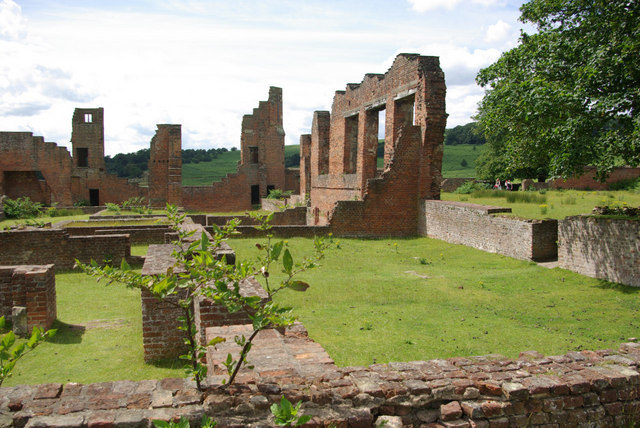
The mansion was additionally enlarged and modified 20 years later, and again at the end of the 17th century. There are a few interesting facts connected with the structure: it was one of the earliest country houses erected in England without an outer defensive wall, and one of the first grand residences to be constructed almost completely in brick since the Roman period. Also many historians believe that it was the birthplace of Lady Jane Grey, who was born circa 1537.
But without doubt it was her early childhood home. She was known as the “Nine Day Queen,” because she ruled for only 9 days. Her supporters left her without any help and she was overthrown by Queen Mary I. Considered a threat to the Crown by Mary’s advisors, she was beheaded in London in 1554.
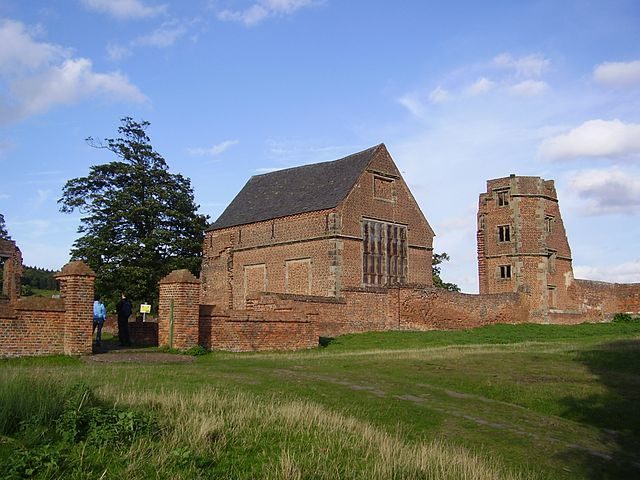
In its heyday the house had two main floors plus attics. There were two (east and west) wings attached to the Great Hall and a formal salon on the north side. The west wing contained the large kitchen and the bakery, as well the servant’s rooms. In the east wing were the family’s private rooms and the chapel.
The house was partly damaged in 1694 by a fire supposedly started by the first wife of the 2nd Earl of Stamford. It was repaired for the visit of King William III in 1696. Life in the mansion ended in 1739, when the 4th Earl moved with his family to Enville Hall, in Staffordshire. By the end of the 18th century Bradgate House was mostly in ruins and was slowly disappearing from the face of the earth.
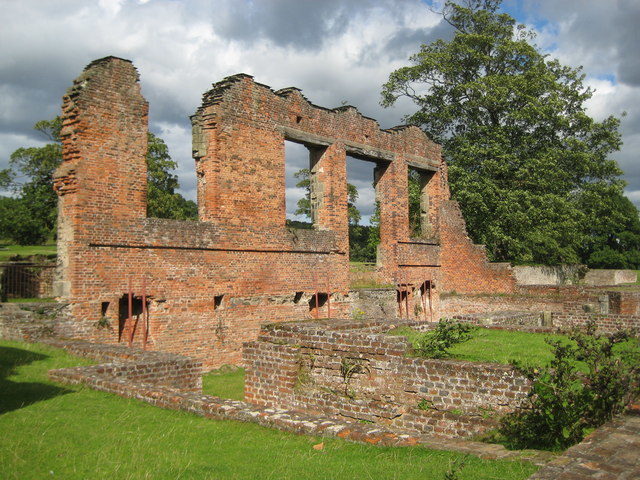
Today there is not much left from the former glory of the once remarkable building. Although only an evocative silhouette, the contours of the complex are still clearly visible and recall its lost magnificence. The chapel, which is the only structure of the complex with a roof, is still mostly intact.
But it should be pointed out that it has undergone repairs several times in the last 200 years. In the chapel is placed the memorial tomb of Sir Henry Grey (a cousin of Lady Jane Grey) and his wife. The tomb is formed of two alabaster life-size statues of the couple.
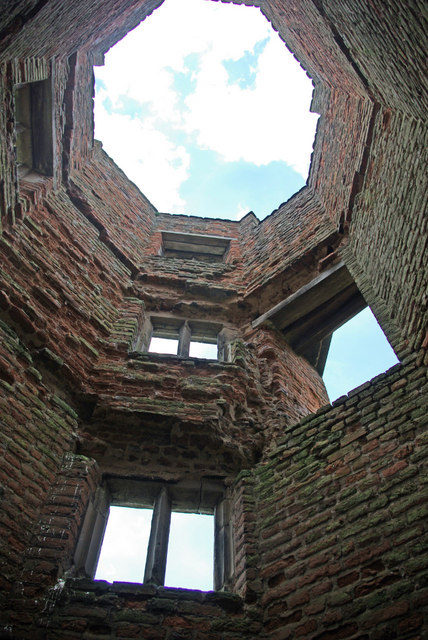
The half ruined eastern tower, known as Lady Jane’s tower, now only two floors high, is located near the chapel. One wall of the Great Hall is also remains standing. In 1696 the largest window in the wall was enlarged in order to be made into a bay. This modification was part of the reconstruction work done during the preparations for the visit of William III.
There are a few smaller walls in front of the “new” wall. They formed part of the original rooms, which probably served as cellars. Some fragments of the walls of the kitchen, the kitchen fireplace and several ovens are also still recognizable. Parts of the other ruined towers can be seen too.
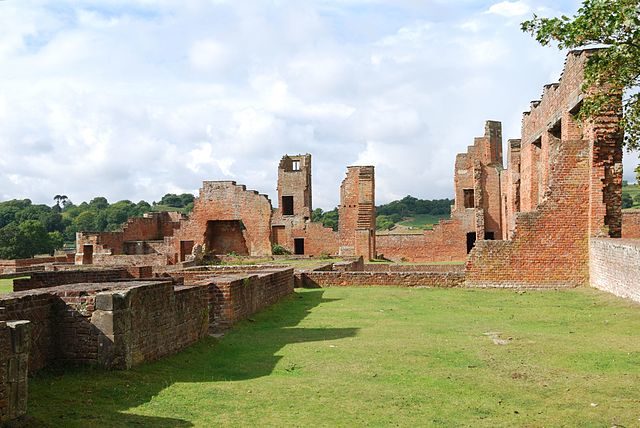
In the mid 19th century a member of the same family, George Harry Grey, 7th Earl of Stamford, built a house in the nearby village of Groby which he called by the same name. The new Bradgate House was purposely erected to bring back the memory of the old house.
But unfortunately, this extravagant house with 52 rooms, 12 chimneys, and 365 windows, was sold in 1925 and deliberately demolished. Only the huge quadrangular stables complex was left to decay, completely exposed to the elements. Today it still stands proudly, but in very bad condition.
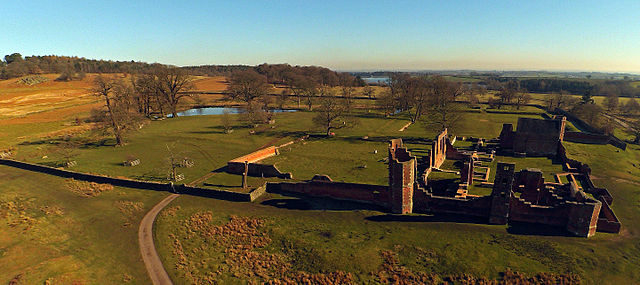
The ruins of the 16th century mansion are not the only attraction of the vast Bradgate Park. The park is a protected Site of Special Scientific Interest with a number of rare flora and fauna. In addition to the historical and archaeological value, the park has an important geological significance. Some of the oldest rocks in England are located here, in which examples of important Precambrian fossils, Charnia masoni, which are one of the oldest complex fossils in the world (570 million years old), have been discovered.

According archaeological evidence, the area on which Bradgate Park now lies was inhabited since the Late Stone Age, some 15,000 years ago. The people preferred the area for living mostly because of the abundance of wild animals.
At first they hunted only to survive. In the 12th century the area was for the first time enclosed as a deer park for sport hunting. Since then the park was several times enlarged in size. Today herds of deer still roam freely on the 800 acre property.
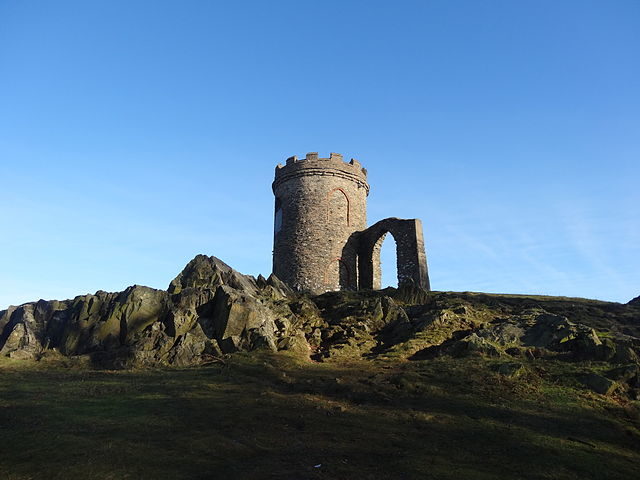
As well as exploring the unique wild nature, visitors to the park can enjoy concerts, art exhibitions, and theater performance held in the mansion’s ruins. On the top of the park’s highest hill is placed the Old John Tower, an 18th century folly, which was reconstructed in the 19th century. It was used in the past mainly as a meeting place for hunters and an observation post.
